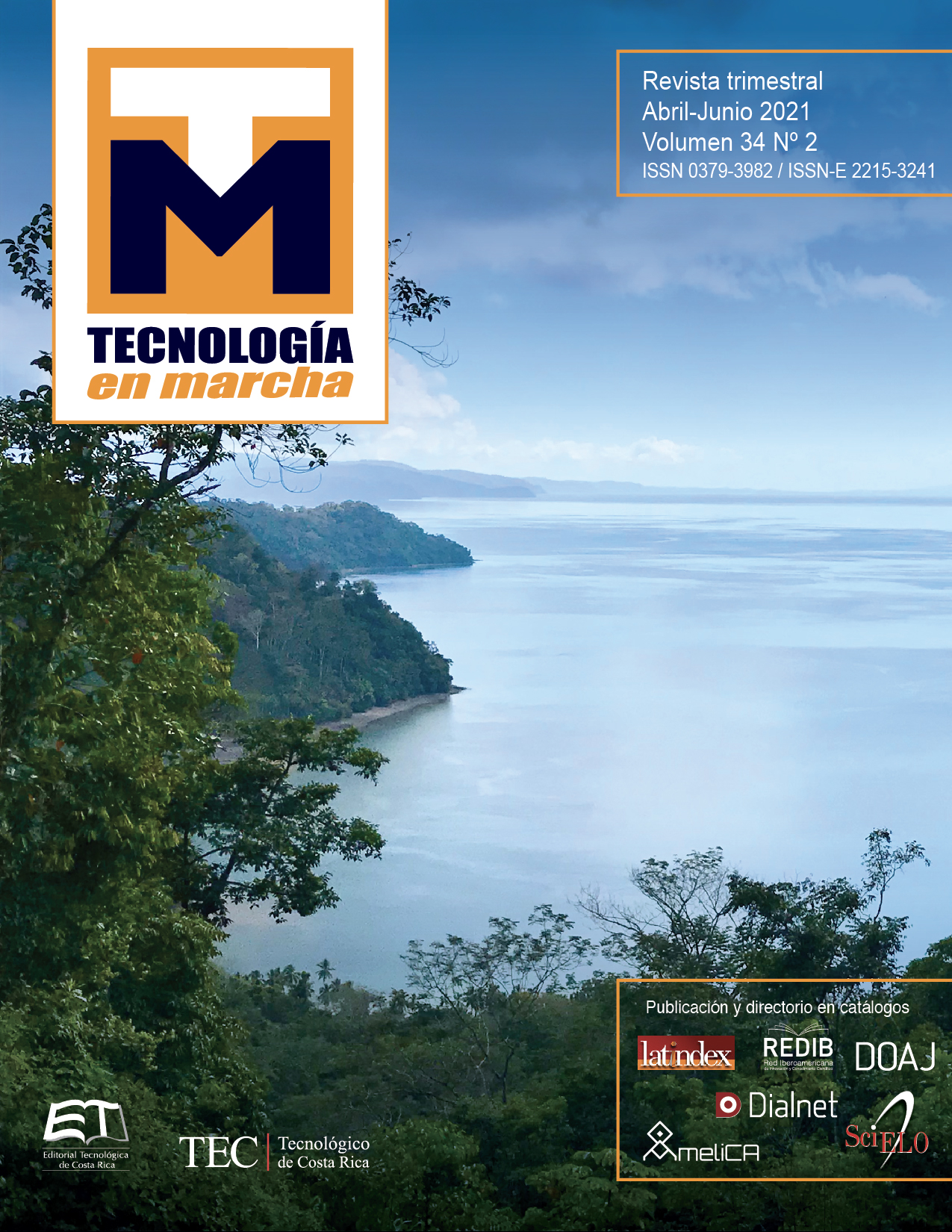Establecimiento de un protocolo para la inducción de embriogénesis somática indirecta en Allium Sativum (Ajo Criollo Costarricense)
Contenido principal del artículo
Resumen
El ajo (Allium sativum), presenta propiedades medicinales y culinarias, así como propiedades repelentes aprovechables en la agricultura orgánica, que lo hace un cultivo con alta demanda en nuestro país y en el resto del mundo. En Costa Rica se encuentra un material nativo, muy apreciado por el consumidor nacional por sus cualidades organolépticas, como sabor y olor. La falta de semilla de calidad y falta de material adaptado a condiciones tropicales, así como la competencia por precio con el ajo importado de China y Guatemala (ya que se importa a precios muy bajos por kilo), hace que se dificulte colocarlo en los mercados nacionales. Por lo anterior se planteó esta investigación con el objetivo de obtener embriones somáticos vía indirecta y regenerar plántulas libres de virus y otros patógenos, para ser utilizadas como método de propagación vegetativa. Los explantes utilizados para la inducción de callogénesis fueron meristemos radicales. El callo se indujo en medio de cultivo M&S (1962), con sacarosa al 3% y pH 5,7, suplementado con 1,0 mg/L, ácido naftalenacético (ANA), 2,0 mg/L bencil-amino purina (BAP) y 0,5 mg/L ácido 2,4-diclorofenoxiacético (2,4-D). La proliferación de los callos de obtuvo al subcultivarlos en el medio M&S (1962), con sacarosa al 3% y pH 5,7 suplementado 1 mg/L BAP y 0,25 mg/L de 2,4-D, al mes se observó la formación de embriones globulares la maduración embrionaria se obtuvo con la adición de 0,5 mg/L de AG3 y para la germinación con 0,5 mg/L de BAP.
Detalles del artículo

Esta obra está bajo una licencia internacional Creative Commons Atribución-NoComercial-SinDerivadas 4.0.
Los autores conservan los derechos de autor y ceden a la revista el derecho de la primera publicación y pueda editarlo, reproducirlo, distribuirlo, exhibirlo y comunicarlo en el país y en el extranjero mediante medios impresos y electrónicos. Asimismo, asumen el compromiso sobre cualquier litigio o reclamación relacionada con derechos de propiedad intelectual, exonerando de responsabilidad a la Editorial Tecnológica de Costa Rica. Además, se establece que los autores pueden realizar otros acuerdos contractuales independientes y adicionales para la distribución no exclusiva de la versión del artículo publicado en esta revista (p. ej., incluirlo en un repositorio institucional o publicarlo en un libro) siempre que indiquen claramente que el trabajo se publicó por primera vez en esta revista.
Citas
[2] A. Guillén, C. Zúñiga, J. Brenes, L. Hilje, R. Chacón, y W. Rivera, Cultivo del ajo en Costa Rica. Costa Rica: EUNED, 2013.
[3] L. Pérez Moreno, E. Palemón Alberto, S. Ayvar-Serna, y E. Cevallos Ruiz, «Adaptación de cultivares de ajo morado y blanco (“Allium sativum” L.) en Acatlán, Guerrero, México», Acta Universitaria, ISSN 0188-6266, Vol. 15, No. 1, 2005, pags. 55-65, vol. 15, pp. 55-65, ene. 2005.
[4] M. Reveles-Hernández, R. Velásquez-Valle, y Á. G. Bravo-Lozano, «Tecnología para el cultivar ajo en Zacatecas», p. 294, 2009.
[5] J. I. Cubero, Introducción a la mejora genética vegetal, 3a ed. España: Mundi-Prensa Libros, 2013.
[6] T. Murashige y F. Skoog, «A Revised Medium for Rapid Growth and Bio Assays with Tobacco Tissue Cultures», Physiol Plant, vol. 15, n.o 3, pp. 473-497, jul. 1962.
[7] S. A. Nasim, A. Mujib, R. Kapoor, S. Fatima, y J. Aslam, «Somatic embryogenesis in Allium sativum L. (cv. Yamuna Safed 3): Improving embryo maturation and germination with PGRs and carbohydrates», Anales de Biología, vol. 32, pp. 1-9, 2010.
[8] V. Parra Vega, «Aspectos básicos y aplicados de la inducción de embriogénesis en microsporas de pimiento y colza», Tesis Doctoral, Universitat Politécnica de Valéncia, España, 2015.
[9] E. Hernandez, «Embriogénesis somática in vitro y aclimatación de plántulas obtenidas por organogénesis directa en heliconia spp», Tesis Doctoral, Institución de Enseñanza e Investigación en Ciencias Agrícolas, México, 2013.
[10] A. Fehér, «The initiation phase of somatic embryogenesis: what we know and what we don’t», Acta Biologica Szegediensis, vol. 52, pp. 53-56, 2008.
[11] X. Yang y X. Zhang, «Regulation of Somatic Embryogenesis in Higher Plants», Critical Reviews in Plant Sciences, vol. 29, n.o 1, pp. 36-57, ene. 2010.
[12] S. de J. Martínez et al., «Maduración y germinación de embriones somáticos de Sorghum bicolor (L.) Moench cultivar ‘CIAP 132R-05’», Biotecnología Vegetal, vol. 17, n.o 1, mar. 2017.
[13] A. Lara, R. Valverde, y L. Gómez, «HISTOLOGÍA DE EMBRIONES SOMÁTICOS Y BROTES ADVENTICIOS», AGRONOMÍA COSTARRICENSE, vol. 27, pp. 37-48, 2003.
[14] A. Espinosa, J. Silva, S. Sariego, L. Cholo Masapanta, y H. Delgado, «Efecto del tipo de explante y la concentración de ácido 2,4-diclorofenoxiacético en la formación de callos en Morus alba L.», Pastos y Forrajes, vol. 35, n.o 4, pp. 407-416, dic. 2012.
[15] F. Villanueva, M. Ávila, A. Mansilla, S. Abades, y J. Cáceres, «Efecto de auxinas y citoquininas en el cultivo de tejido de Ahnfeltia plicata (Hudson) Fries, 1836 (Ahnfeltiales, rhodophyta) de la región de magallanes», Anales del Instituto de la Patagonia, vol. 41, n.o 1, pp. 99-111, 2013.
[16] K. Carhuaricra, J. Olivera, J. Gonzales, y J. Rodríguez,

